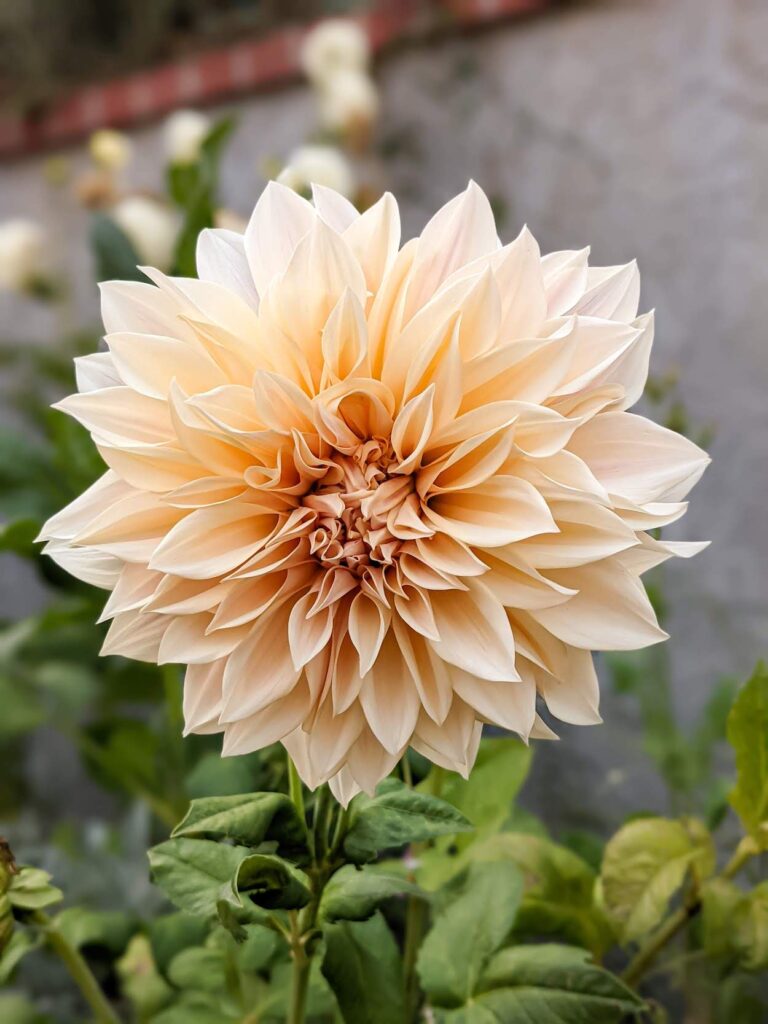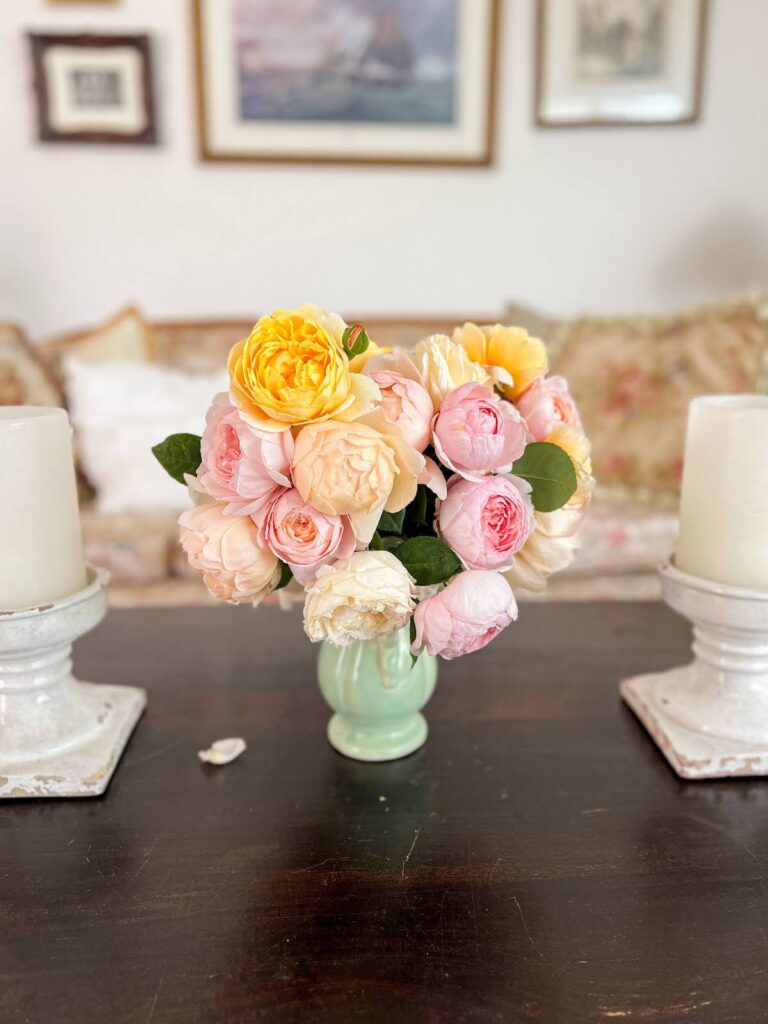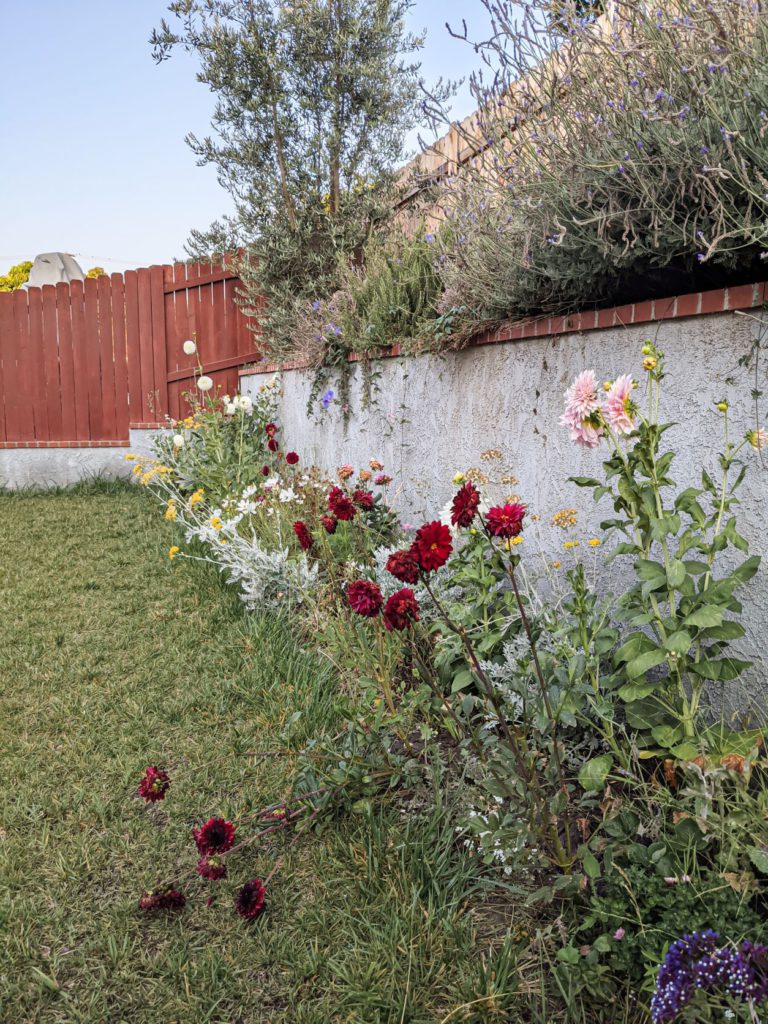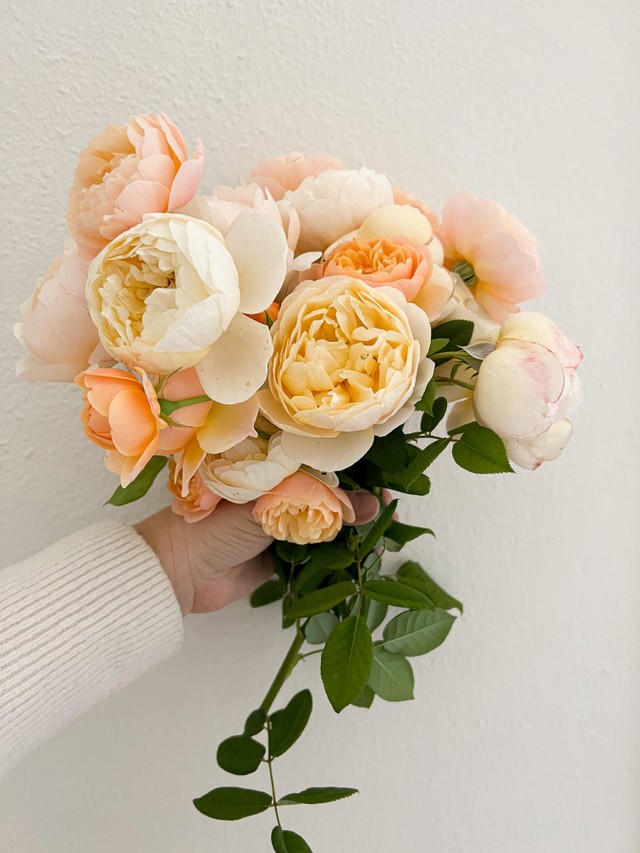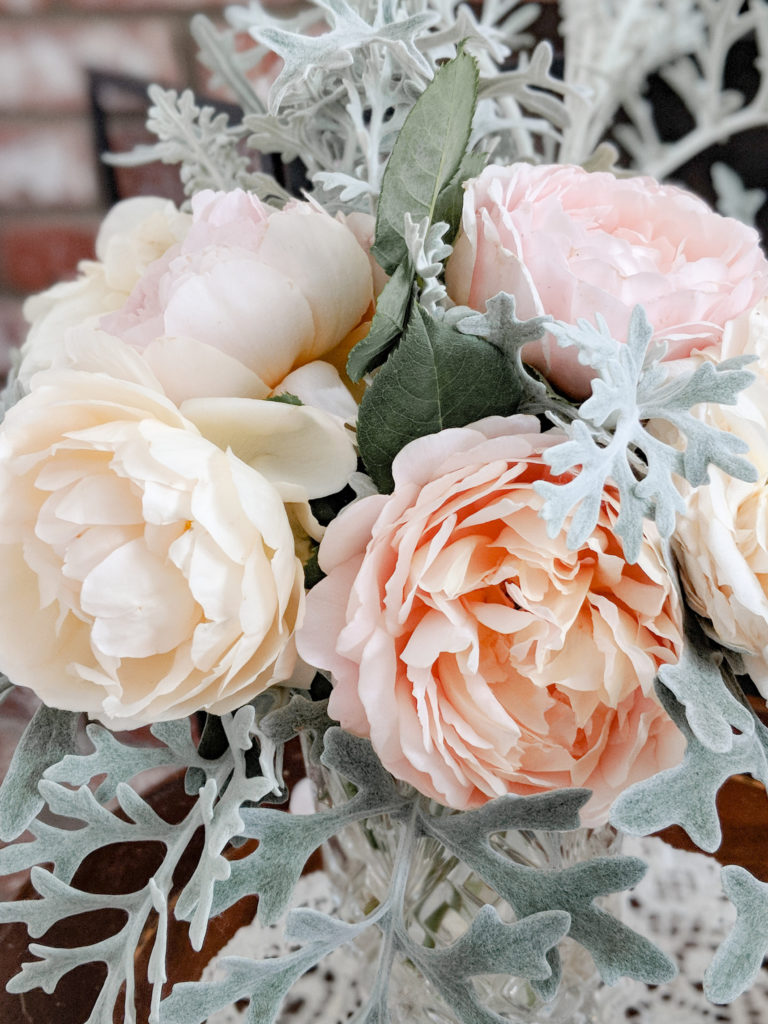
I never thought I’d be good at rose-growing.
When we moved into this house six years ago, I had never managed to keep a house plant alive for longer than six months. I tried, of course, but without much success.
Anything green that came into our home died a slow, lingering death, aided by some combination of too much or too little or too irregular watering, too much or too little sunlight, and the wrong temperature.
It was depressing.
So when I suddenly found myself with both a front and back yard to care for, I felt overwhelmed and confused. It didn’t help matters that I was deep in a hectic legal career.
I started out by just planting things I thought were pretty in places where I thought they’d look nice.
That went… poorly. I stuck camellias in full sun, didn’t realize how big the lavender would get, and would get so swept up in my day job that I’d forget to water things, to the point that even the succulents died.
The Turnaround
It went that way for about five years, until last spring, when something finally clicked.
I started with planting just the strip of land above our retaining wall in the backyard. That’s just about five feet deep and 60 feet wide.
I researched Mediterranean gardens because our climate is similar, and wound up with a garden full of lavender, sage, rosemary, lantana, and olive trees. It smelled heavenly.
There were challenges, of course. It was a hot, dry summer, and I had to water my young plants by hand because we didn’t (still don’t) have an irrigation system up there. The weeds came in strong over the course of our wet winter, even though I had put down weed barrier.
Some plants thrived, while others struggled (I even had to replace one of the lantana). Still, a year later, things have filled in nicely and the garden is looking–dare I say it–beautiful.
Catching the Rose-Growing Bug
Things really turned a corner, though, when a friend recommended I try growing roses. I had always loved the delicate, multi-petaled English roses, but I thought they needed a cool, damp, English climate (a myth we’ll talk about in a moment).
She told me that she grew them quite easily in Texas. I figured that if they can thrive in Texas, they can thrive here in California. I placed an order online the same day for three little rose bushes.
I’m now up to 17 roses of different types and styles, and I’m scheming to add more. There are climbers by the chimney and along the back fence, pretty shrubs lining the walkway, and the original three bushes growing happily by the front patio.
Along the way, I’ve learned that many of my preconceived ideas about roses were wrong. They were dead wrong. In hopes of sparing you the same misconceptions that might keep you from growing your own rose garden, here are the top myths I believed about rose care and some truth to dispel them.
Myth #1: Roses are hard to care for.
People on TV who have roses seem to be constantly tending to them, don’t they? I think that’s where I got the idea that rose-growing requires obsessive, daily maintenance.
It turns out nothing could be farther from the truth. Roses are pretty low-maintenance plants. I water mine once a week (twice when it’s really hot or when they’re new and just getting rooted), feed them once every 1-2 months, and prune them once in winter. Occasionally, I’ll spray some neem oil to keep the aphids away. That’s it.
Myth #2: Successful rose-growing requires a cool, damp climate.
I assumed that English roses needed, well, an English climate. Some of them might prefer that sort of climate, but not all.
It turns out a lot of them really like a warm, dry environment. That warm, dry air helps prevent the buildup of moisture on their leaves that can lead to fungal infections.
Myth #3: Roses need lots of water.
Here in Southern California, we’ve been living under drought conditions for so long that I’ve almost forgotten what it’s like to have a normal wet season (this last winter was a glorious relief from that). Because of that, I’ve been reluctant to plant anything that requires too much water to thrive.
I was afraid a rose garden would be a water suck. In truth, roses actually get very unhappy if you water them too much. Each plant only needs about 2” of water each week, or about 4-5 gallons per plant. Rose-growing turns out to be one of the less water-intensive gardening activities.
Myth #4: Roses are hard to prune.
When winter arrived, I knew it was time to prune my roses, but I was afraid to take clippers to them. Luckily, my aunt signed me up for a rose care class at our favorite local rose nursery, Otto & Sons, where I learned that roses are remarkably forgiving plants when it comes to pruning.
With the exception of climbers, which require a little extra attention, you can do the bulk of your rose trimming with an electric hedge trimmer (I know, it shocked me when I saw it, too). Then you can thin things out more carefully with handheld snips.
It’s almost impossible to prune your rose bush too much, and it will almost always grow back quite happily afterward. Bonus: rage pruning your roses can turn rose-growing into a great outlet for letting off steam.
When I prune my roses, I like to use the Felco F-8 snips, which are ergonomic and a good fit for my small hands. You can find those online by clicking this link. (This is an affiliate link, which means if you choose to buy something through those links, I’ll receive a small commission at no extra cost to you. I will always identify affiliate links for you. Thanks for supporting my work!)
Myth #5: Rose-growing is a constant battle against disease.
Sure, yes, there are some old rose varieties that are definitely prone to disease. Lots of modern rose variants, though, have been cross-bred with hardy varieties to make them disease resistant. If you’re worried about battling infections in your new roses, just look for rose varieties that have been bred for disease resistance.
Take a look at the listing for this rose variety (I’ve got it growing in the front yard). If you scroll down, you’ll notice a box on the left. That box lists the rose characteristics and identifies its disease resistance as “excellent.” Look for something similar when picking out your own roses for your garden.
Now, all this isn’t to say that rose-growing is a total cakewalk. Roses do sometimes still give me a bit of a headache. I’ve had plants that just refused to bloom, for no discernible reason. I’ve had to transplant a rose bush to keep it happy.
But overall, rose-growing has been a source of joy and even some unexpected surprises.
The New York Times recently came out with an article about a study showing that about 120 minutes outside each week was optimal for mental health. With some roses to care for and enjoy, those 120 minutes will feel like no time at all.
If you’re curious about some of my favorite rose-gardening tools, here’s a round-up of the things I use most! These are affiliate links, which means if you choose to buy something through those links, I’ll receive a small commission at no extra cost to you. I will always identify affiliate links for you. Thanks for supporting my work!
My favorite pruning snips: the Felco F-8
Many other rosarians also swear by the Felco F-2
My favorite liquid fish-based fertilizer
My favorite organic mineral fertilizer
Let’s stay connected!
Join my newsletter for 30% off all new releases, regular updates with helpful tips and tricks, first crack at registration for upcoming workshops, exclusive discounts, and more.
Join the A Bee In The Bonnet Facebook Group to participate in knitalongs and other fun community events
Come hang out with me on the A Bee In The Bonnet TikTok
Follow along on the A Bee In The Bonnet Instagram
Get inspired via the A Bee In The Bonnet Pinterest

